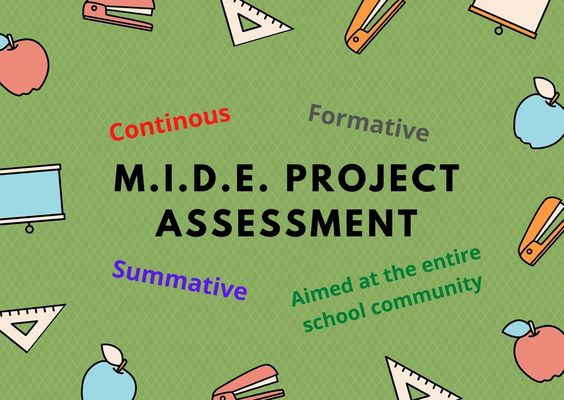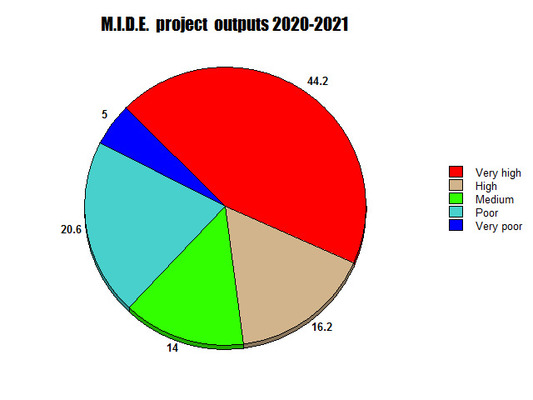
Image created for the project.
1-Type of assessment: formative and summative.
Formative: we intend to assess the collaborative work of each student inside the international working team to improve the adquisition of competencies.
Summative: we want to assess the products during the school year to know if the student acquired the competencies for the academic evaluation.

2-Time for assessment: continuous assessment.
The project has been included in the schedule of several subjects at different educational levels (Classical languages and ICT in Secondary and Post-Secondary education), therefore, it has counted both for the mark of each partial evaluation and for the final grade of each student.

3-Scope of the assessment: students, families and teachers.
The assessment has taken into account both the project participants and their families.

4-Tools for the assessment: rubrics, surveys and video about students`opinion.
4a-Rubrics:
Project logo: Assessment rubric for the logo
1st Product: Assessment rubric for the Classical Bestiary.
2nd Product: Assessment rubric for the Female Monster Museum.
3rd Product:
Assesment rubric for Dr. Van Helsing guide.
Assessment rubric for Dr. Van Helsing presentation.
4b-Surveys:
Satisfaction survey for students and commented results.
Satisfaction survey for teachers and commented results.
Satisfaction survey for families and commented results.
4c-Video on students`oppinion:

5-Project`s results:
Here are the results obtained by the students in the final academic evaluation of the project.
Achievement indicators:
Very poor: grade point average is less than 2
Poor: grade point average is equal to or higher than 2 or less than 4
Medium: grade point average is equal to or higher than 4 or less than 6
High: grade point average is equal to or higher than 6 or less than 8
Very high: grade point average is equal to or higher than 8
Chart of project outcomes:

The degree of achievement of the objectives in the final assessment has been highly satisfactory:
Very High: 44.2 %
High: 16.2 %
Medium: 14 %
Poor: 20.6 %
Very poor: 5 %